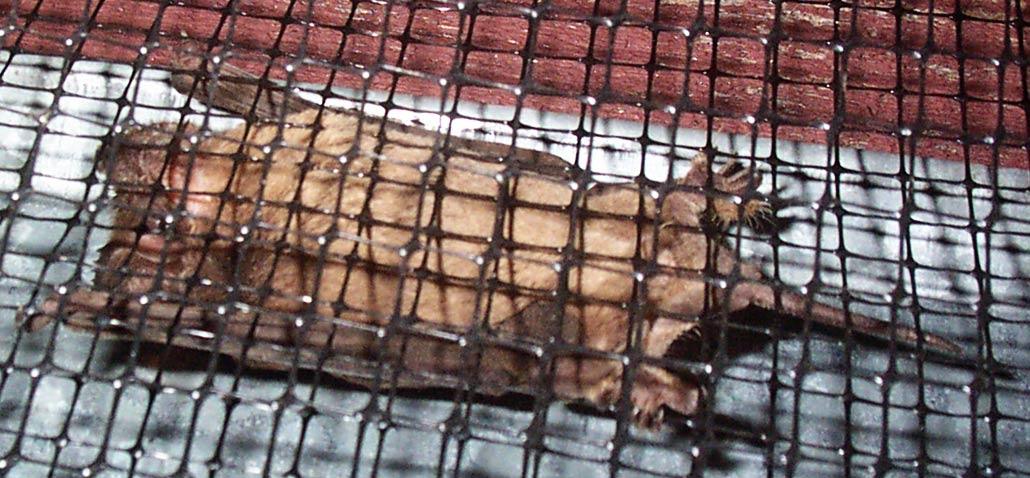- USA Wildlife Removal Education Guide - Should you ever trap a Bat in a Cage?
Should you ever trap a Bat in a Cage?

Learn about How To Get Rid of Bats with my how-to guide.
Even if your intent is to be humane, it probably is not going to turn out that way because bats will not do well in a cage. They are fragile creatures and if they panic and flutter about they can injure themselves severely. Moreover, they have a high metabolism, and can quickly go through their energy reserves, resulting in starvation, dehydration and death. If confined to a cage and left outside, they can quickly be overcome by exhaustion and/or heatstroke. All of this give a major lie to the concept of humane trapping.
Wildlife experts maintain that the best solution for removing bats from a structure – your attic, for example – is exclusion: finding their entry/exit points and blocking them. Here, too, caution again is called for.
Bats exit at night to forage, so that is the right time to close off their reentry points, keeping in mind that some of the animals may have remained behind. Too, following the mid- to late spring birthing period, there will be babies at the roost that will be too small to fly for a couple of months. For them, the attic simply becomes a larger cage. Lacking food and water, they will soon perish.
Thus an exclusion strategy is called for. A good way to identify their entry/egress points is to go into the attic during the day, and check for sunlight coming in through cracks or small hoes. Bats are actually tiny and can squeeze through extremely small openings. Mark these openings with something that you can see from outside such as pieces of stick or slivers of fiberglass. Some of these openings can be closed with caulking or foam (caulking is preferred), while others may require a patch.
When you’re satisfied that you’ve successfully excluded the creatures and that none are trapped inside, you might consider building them a bat house. They’ll return the favor by continuing to devour the bugs around your property.
If you need help, we service the entire USA! Click here for a wildlife removal specialist in your town!
Go back to the main Bat Removal page for more information about Should you ever trap a Bat in a Cage?.

